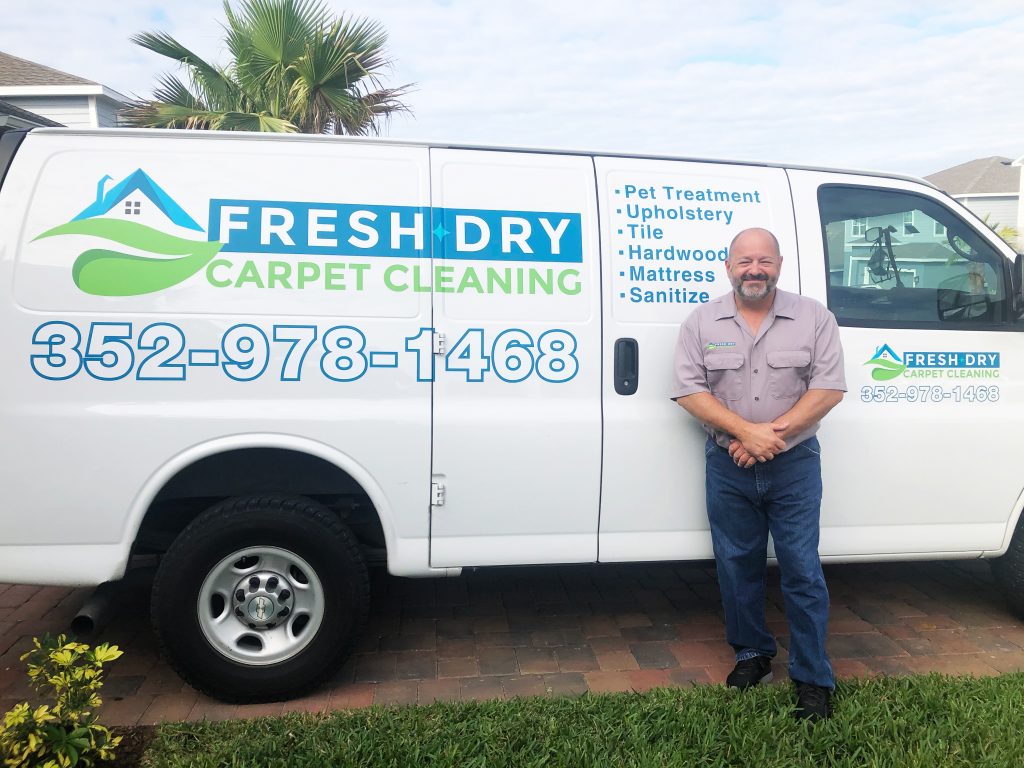Maintaining a clean and inviting home is essential, not just for aesthetic appeal but for your health and well-being. Among the various items in our homes, carpets and rugs play a vital role in both comfort and interior style. However, they also act as a magnet for dirt, dust, allergens, and various other particles that can degrade indoor air quality over time.
Understanding how often to clean your home carpets is crucial, not only to preserve their beauty and extend the life of your carpets, it also to ensure a healthier living space. Numerous factors, including foot traffic, pets, and the presence of children, can significantly influence the cleaning frequency.
In this post, we will discuss the importance of regular carpet cleaning, outline general recommendations, and delve into the specifics that may require more frequent attention.
Whether you’re a new homeowner or simply looking to keep your space in top condition, this guide will provide you with essential insights into maintaining your carpets clean and your home environment healthy.
How Do Carpets Get So Dirty
Carpets are inherently designed to trap and hold particles that would otherwise float around our homes. While this characteristic can help keep the air cleaner, over time, without regular cleaning, carpets can become saturated with various types of unwelcome debris. This accumulation includes everyday dirt and dust from foot traffic, pet dander, food particles, and microscopic allergens that can easily be brought indoors from outside environments.
The process of dirt accumulation is gradual but inevitable. Each step taken over the carpet presses these particles deeper into the fibers, making them harder to remove and causing the carpet to look dull and worn. Certain areas of your home that receive higher traffic, such as hallways, living rooms, and entryways, will accumulate dirt at a faster rate, requiring more frequent attention.

The impact of this accumulation on indoor air quality cannot be overstated. As carpets become overloaded with dust and allergens, these particles can be kicked back into the air with regular foot traffic, affecting the air that you and your family breathe daily. For individuals with allergies, asthma, or other respiratory issues, this can lead to an exacerbation of symptoms, including sneezing, coughing, and difficulty breathing. Even for those without pre-existing conditions, prolonged exposure to poor indoor air quality can lead to health concerns over time.
It’s also important to consider the role of humidity in this process. In environments with high humidity, carpets can trap moisture, creating an ideal breeding ground for mold and mildew, which further compromises air quality and can lead to unpleasant odors and potential health risks.
Regular and effective cleaning is essential to not only maintain the aesthetic appeal of your carpets but, more importantly, to ensure a healthy indoor environment. The next sections will guide you through the recommended cleaning frequencies and methods to keep your carpets in optimal condition.
Carpet Cleaning Frequency | General Recommendations
When it comes to determining how often to clean your carpets, there is a consensus among carpet manufacturers and professional cleaning services: at a minimum, you should aim to deep clean your carpets once every 6 to 12 months. This carpet cleaning guideline serves as a baseline for maintaining carpets under “normal” conditions, ensuring they remain hygienic, visually appealing, and free of accumulated dirt and allergens.
However, it’s important to recognize that this recommendation is a starting point, not a one-size-fits-all solution. Every home is unique, with a variety of factors influencing how quickly carpets become soiled. These general guidelines are designed to be flexible, allowing adjustments based on the specific conditions and needs of your household.
The rationale behind the 6 to 12-month recommendation is grounded in average home conditions and usage. It accounts for the natural accumulation of dirt and wear on carpets over time, aiming to clean them before they become heavily soiled. Regular cleaning within this timeframe can help by extending carpet life by preventing the build-up of abrasive particles that can damage carpet fibers.
However, several household conditions may necessitate more frequent cleanings, such as high foot traffic, the presence of pets, young children, or individuals with allergies. In these cases, carpets may need to be properly cleaned every 3 to 6 months or even more frequently to address specific challenges like pet dander, spills, and the higher potential for allergen accumulation.
By adhering to these general recommendations and adjusting as necessary for your home’s specific conditions, you can maintain your home’s wall to wall carpet in peak condition, contributing to a cleaner, healthier, and more inviting living space. In the following sections, we will explore the factors that may require you to adjust these general cleaning intervals and how to best address them.
Factors That Influence Cleaning Frequency
While the baseline recommendation for carpet cleaning is once every 6 to 12 months, several factors can significantly reduce this interval. Understanding these factors will help you tailor your carpet cleaning schedule to your home’s specific needs, ensuring your carpets remain clean, healthy, and durable. Let’s explore the primary factors that influence cleaning frequency:
High Traffic Areas
Homes with busy entryways, hallways, and common areas experience more rapid dirt accumulation due to increased foot traffic. These areas may require cleaning every 3 to 6 months. Consider using area rugs or runners in these high-traffic zones to protect your carpets and extend the time between deep cleanings.
Presence of Pets
Pets bring joy to our lives but also challenges to carpet cleanliness. Fur, dander, and the occasional accident are inevitable, necessitating more frequent cleanings, possibly every 3 to 6 months. Beyond regular deep cleanings, investing in a high-quality vacuum and spot-cleaning spills or accidents immediately can help manage pet-related dirt and odors.
Children in the Home
Young children often play on the floor, leading to spills, crumbs, and increased wear and tear on carpets. Homes with young children might find that cleaning every 3 to 6 months is beneficial, not only for the carpet’s appearance but for creating a healthier play environment.
Smokers in the Household
Tobacco smoke can leave a lasting odor and residue in carpets. In households with smokers, carpets absorb these odors and chemicals, necessitating more frequent cleanings to maintain a fresh environment. Consider cleaning your carpets every 3 to 6 months if smoking occurs indoors.
Allergy Sufferers
For those with allergies, carpets can trap allergens such as pollen, pet dander, and dust mites, exacerbating symptoms. Regular cleaning, potentially every 2 to 4 months, can significantly reduce allergen levels in the home, providing home allergy management and relief to allergy sufferers.
By considering these factors, you and other homeowners can create a tailored cleaning schedule that addresses the specific challenges of your home. More frequent cleanings not only maintain the appearance and longevity of your carpets but also contribute to a healthier indoor environment. In the next section, we’ll compare DIY versus professional carpet cleaning methods to help you choose the best approach for your home.

DIY vs. Professional Carpet Cleaning
When it comes to keeping your carpets clean, homeowners have two primary options: tackling the job themselves or hiring professional services. Each approach has its benefits and ideal scenarios, depending on the level of cleaning required, budget, and personal preferences.
DIY Carpet Cleaning
Do-it-yourself carpet cleaning can be a cost-effective and convenient option for routine maintenance or addressing minor spills and stains. With the availability of rental carpet cleaning machines and a variety of cleaning solutions, homeowners can undertake this task at their leisure. DIY cleaning allows for immediate response to spills, potentially preventing stains from setting. It’s also a practical choice for light, regular maintenance, helping to extend the periods between professional cleanings.
However, DIY methods have limitations. The equipment available for rent or purchase by homeowners is typically not as powerful as the industrial-grade machines used by professionals. This means that while surface dirt and some stains can be effectively removed, deeply embedded dirt, allergens, and more stubborn stains might not be fully addressed. Additionally, there’s a risk of using incorrect cleaning solutions or methods, which can damage carpets or leave behind residues that attract more dirt.
Professional Carpet Cleaning
Professional carpet cleaning services offer a level of cleaning that is difficult to achieve with DIY methods. Utilizing high-grade equipment and advanced cleaning solutions, professionals can deeply penetrate carpet fibers, removing not just surface dirt and stains, but also deeply embedded allergens, dust mites, and other particulates. This thorough cleaning is essential for improving indoor air quality and is particularly beneficial for households with allergy sufferers.
Professionals also bring expertise in treating different types of carpet materials and stains, ensuring that cleaning methods enhance rather than damage your carpets. Moreover, many professional services offer additional treatments, such as protective coatings that help carpets resist stains and dirt longer, extending the time between cleanings.
When to Choose Professional Cleaning:
Deep Cleaning Needs:
For a comprehensive clean that addresses not only dirt and stains but also allergens and bacteria, professional cleaning is the best choice.
High Traffic or Soiled Areas
Areas that receive a lot of foot traffic or have been significantly soiled will benefit from the deep-cleaning capabilities of professional services.
Before Special Occasions
To ensure your home looks its best for guests or events. This can include parties and family get-togethers like Christmas, Thanksgiving, Easter, etc.
Allergy Concerns
Professional cleaning can significantly reduce allergens, providing relief to those with allergies or respiratory issues.
While DIY carpet cleaning has its place in regular carpet maintenance, for deep cleaning, removing tough stains, or addressing health concerns, professional carpet cleaning services offer unmatched benefits. Knowing when to opt for professional help can ensure your carpets remain in pristine condition, contributing to a cleaner, healthier home environment.
Extending the Life of Your Carpets Through Regular Cleaning
Regular carpet cleaning is about more than just maintaining a clean appearance; it’s a crucial practice for extending the lifespan of your carpets and ensuring a healthy environment within your home. Dirt, dust, and other particles can wear down the fibers of your carpet over time, leading to premature aging and the need for replacement.
Here are some strategies to help extend the life of your carpets through regular cleaning and maintenance:
Vacuum Regularly
The simplest and most effective step you can take is to vacuum your carpets at least once a week. High-traffic areas may need more frequent vacuuming to prevent the buildup of dirt and debris. Using a vacuum cleaner with a HEPA filter can also help remove more dust, allergens, and fine particles, improving air quality.
Spot Clean Spills Immediately
Spills are inevitable, but how you respond to them can make a big difference. Blotting spills with a clean, dry cloth immediately can prevent them from setting into the carpet fibers. Avoid rubbing the spill, as this can push the liquid deeper into the carpet.
Use Doormats
Placing doormats at all entrances to your home can significantly reduce the amount of dirt and debris brought in from outside. Encourage family members and guests to wipe their feet or even remove their shoes upon entering.
Professional Cleaning
Even with regular vacuuming and spot cleaning, having your carpets professionally cleaned once every 6 to 12 months is essential for deep cleaning and removing accumulated dirt and allergens that regular vacuuming cannot.
Protect High-Traffic Areas
Consider using area rugs or runners in high-traffic zones. These can protect your carpets from wear and tear and can be easily removed and cleaned.
Rearrange Furniture Periodically
Shifting the layout of your room occasionally can prevent excessive wear and tear in specific areas of your carpet and distribute foot traffic more evenly.
Treat Stains Properly
Understanding how to treat different types of stains (e.g., food, ink, pet) can prevent permanent damage. Always test cleaning solutions on an inconspicuous area first to ensure they won’t discolor or damage the carpet.
By following these tips, you can maintain not just the appearance but the integrity and longevity of your carpets. Regular maintenance and professional cleanings not only keep your carpets looking new but also contribute to a healthier, more pleasant home environment.

